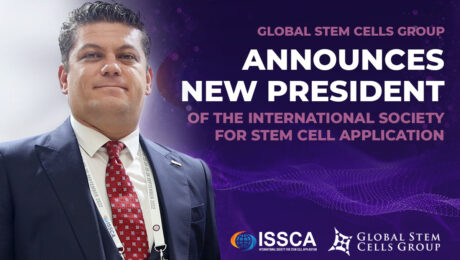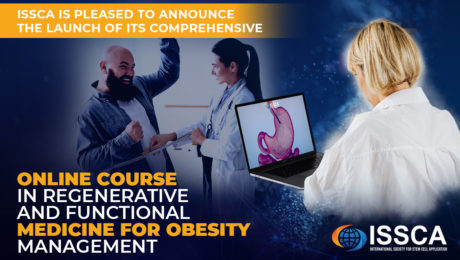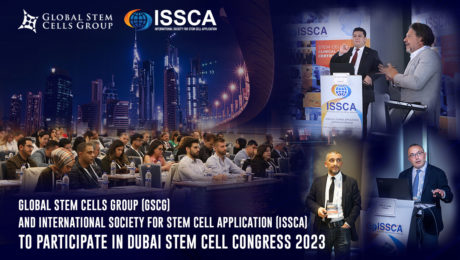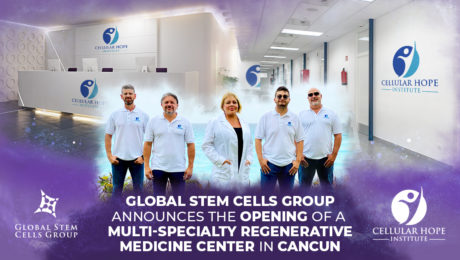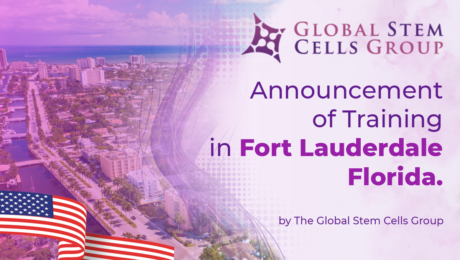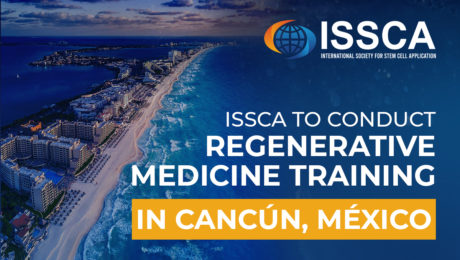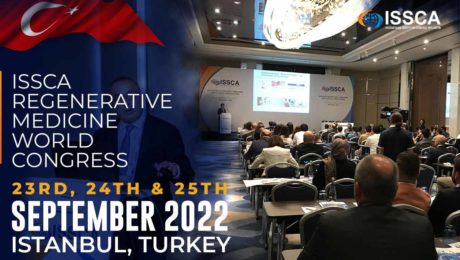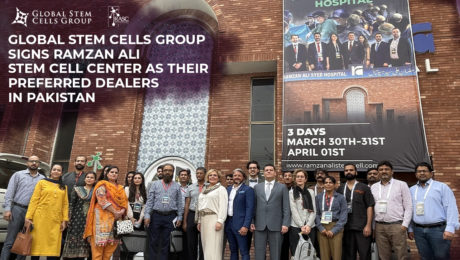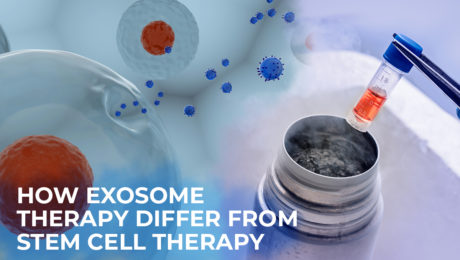Global Stem Cells Group Announces New President of the International Society for Stem Cell Application (ISSCA)
Miami, Florida – Global Stem Cells Group, a leading organization in the field of regenerative medicine, is pleased to announce the appointment of Dr. Salih Yildirim as the new President of the International Society for Stem Cell Application (ISSCA), a division of Global Stem Cells Group. Dr. Yildirim previously held the position of Director of Overseas Operations at ISSCA.
Dr. Salih Yildirim brings a wealth of experience and expertise to his new role as President of ISSCA. Having previously served as the Director of Overseas Operations, Dr. Yildirim has demonstrated his exceptional leadership skills and strategic vision throughout his career. He has played a vital role in expanding ISSCA’s international presence and fostering collaborations with stakeholders worldwide.
In a statement regarding the appointment, Dr. Daeyong Kim, the former President of ISSCA, expressed his confidence in Dr. Yildirim’s ability to lead the organization. Dr. Kim stated, “I think you are the best leader and the most prepared to be the President of ISSCA. Therefore, I think you should be the head of ISSCA.” Dr. Kim will now transition to other support functions within ISSCA.
Benito Novas, head of Public Relations for ISSCA, expressed his admiration for Dr. Salih Yildirim’s professional qualities. Novas said, “I have known and worked with Dr. Salih for more than 10 years, and I am honored to have him as President within the company. During these years, he has proven to be an exceptional leader with a great vision for ISSCA.”
ISSCA’s objectives under the leadership of Dr. Salih Yildirim will include advancing the understanding and application of stem cell therapies, promoting scientific research and collaboration among professionals in the field, and advocating for the ethical and responsible use of regenerative medicine worldwide. Dr. Yildirim’s extensive experience in business development, international relations, and regenerative medicine will undoubtedly contribute to the achievement of these objectives.
About Dr. Salih Yildirim:
Dr. Salih Yildirim holds a bachelor’s and master’s degrees in business administration from Cleveland State University (United States) and a Ph.D. in health management from the University of Health Sciences. He has held various key positions throughout his career, including Director of Overseas Operations at ISSCA. Dr. Yildirim is currently the General Manager of BioTrend Medical International, a biotechnology firm specializing in genetics, molecular biology, and stem cell technologies. He also serves as the chief executive officer of ReGen.IC Clinic, specializing in regenerative medicine and stem cell applications. Additionally, he is a member of the International Society for Stem Cell Application’s Board of Directors and the Global Stem Cell Group’s Board of Directors and International Operations Manager. Dr. Yildirim is also a member of Istanbul Atlas University’s Board of Directors. He is married and a proud father.
About ISSCA
The International Society for Stem Cell Application (ISSCA) is a multidisciplinary community of scientists and physicians who aspire to treat diseases and lessen human suffering through advances in science, technology, and regenerative medicine.
ISSCA updates its members on advances in stem cell research, MSC, exosomes, and regenerative medicine
The ISSCA’s vision is to take a leadership position in promoting excellence and setting standards in the regenerative medicine fields of publication, research, education, training, and certification.
The international community provides a platform for practitioners to interact with scientists and build medical networks necessary for marketing.
As a medical specialty, regenerative medicine standards and certifications are essential, which is why ISSCA offers certification training in cities worldwide. The goal is to encourage more physicians to practice regenerative medicine and make it available to patients nationally and internationally. Incorporated under the Republic of Korea as a non-profit company, the ISSCA is focused on fostering excellence and standards in regenerative medicine.
About Global Stem Cells Group
Global Stem Cells Group is the parent company of six companies that are dedicated to stem cell research, solutions, and technology training. The group was founded in 2012 and combines dedicated researchers, patient educators, and physician trainers with the shared goal of meeting the need for high-end stem cell solutions and treatments.
Given that the group has a singular focus in this field, it is uniquely positioned to become the global leader in cellular medicine. In addition, by bringing together leading professionals in cellular medicine, it can discover issues that the industry faces and focus its research and development in this area. This specialization has, undoubtedly, enabled it to come up with solutions that address some of the significant issues that most stakeholders are facing in the industry.
Global Stem Cells Group is a publicly traded company operating under the symbol MSSV. https://finance.yahoo.com/quote/mssv/
Safe Harbor Statement: Statements in this news release may be “forward-looking statements”. Forward-looking statements include, but are not limited to, statements that express our intentions, beliefs, expectations, strategies, predictions, or any other information relating to our future activities or other future events or conditions. These statements are based on current expectations, estimates, and projections about our business based partly on assumptions made by management. These statements are not guarantees of future performance and involve risks, uncertainties, and assumptions that are difficult to predict. Therefore, actual outcomes and results may and are likely to differ materially from what is expressed or forecasted in forward-looking statements due to numerous factors. Any forward-looking statements speak only as of the date of this news release, and The Global Stem Cells Group undertakes no obligation to update any forward-looking statement to reflect events or circumstances after the date of this news release. This press release does not constitute a public offer of any securities for sale. Any securities offered privately will not be or have not been registered under the Act and may not be offered or sold in the United States absent registration or an applicable exemption from registration requirements.
- Published in Press Releases
Global Stem Cells Group (GSCG) and International Society for Stem Cell Application (ISSCA) to Participate in Dubai Stem Cell Congress 2023
MIAMI, Florida, February 15, 2023 – Global Stem Cells Group (GSCG) and its educational division, the International Society for Stem Cell Application (ISSCA), are proud to announce their participation as sponsors and co-organizers of the Dubai Stem Cell Congress 2023. The congress, endorsed by the Hortman Stem Cell Laboratory, will take place on the 27th and 28th of February 2023 at the prestigious Waldorf Astoria on The Palm in Dubai.
The congress will bring together international experts in regenerative medicine and stem cell research from around the world to share their knowledge, experiences, and insights with the academic community and the general public. The event will also provide a platform for patients to share their success stories of stem cell therapy and how it has helped them overcome various life-threatening diseases.
“We are honored to welcome you to the first edition of the Dubai Stem Cell Congress 2023, which will host international experts in the field of Regenerative Medicine & Stem Cell Research from around the world,” said Dr. Fatma Alhashimi, Chairman of Dubai Stem Cell Congress. “We will be showcasing cutting-edge data, stem cell technologies, and advanced applications.”
GSCG will showcase its range of cellular products and equipment, including exosomes for topical and intravenous use, Mesenchymal Stem Cells (MSC), Bone Marrow Kit, PRP Kit, Fat Kit for obtaining Stromal Vascular Fraction (SVF), workstation, and laboratory equipment. ISSCA, on the other hand, will be represented with its training, congresses, conferences, and the fellowship in Cellular Therapies.
“Our mission is to make cellular therapies a reality for both doctors and patients, and we are happy to continue that mission by sharing our knowledge and showcasing our Cellgenic branded Cellular products and equipment at the congress,” said Benito Novas, Managing Director of Global Stem Cells Group and Head of Public Relations for ISSCA.
With over 25 world-class international speakers, including ISSCA-certified speakers, the congress will feature a variety of panel discussions, lectures, and presentations on the latest innovative technologies in stem cell and regenerative medicine.
ISSCA-certified speakers and experts who will be presenting lectures at the congress include the following:
- Erdinç Civelek, a brain surgeon at Gaziosmanpaşa Taksim Hospital for Research and Education in Turkey.
- Dr. Serdar Kabataş, a brain surgeon at Gaziosmanpaşa Taksim Research and Education Hospital in Turkey.
- Abdulmajeed Hamadi, a consultant hematologist and pioneer in transplantation and stem cell therapy with an FRCP designation in Iraq.
- Salih Yildirim, the Director of Overseas Operations of ISSCA and a member of the Board of Directors of the Global Stem Cell Group and Director of International Operations.
- Benito Novas, the Managing Director of Global Stem Cells Group and Head of Public Relations for the International Society for the Application of Stem Cells in the USA.
Among the esteemed speakers at the event are:
Prof. Anil Dhawan, Dr. Frances Verter, Dr. Masayo Takahashi, Dr. Essam Abdelalim, Prof. Shuibing Chen, Prof. John E. Wagner, Mrs. Kim Petrella, Dr. Edward Guindi, Dr. Mazaiah Yaacob, Dr. Mohammed Moulay, Mr. Oliver Papavlassopoulos, Dr. Sean Ng, Dr. Chiara Cugno, Dr. Siti Aminah, Mr. Thomas Moss, Prof. Dr. Tim Schulz, Dr. Luis Saraiva, Mrs. Renata Mihályová, Dr. Srinivasan Periathiruvadi and Dr. Ahmed Foul.
For the first time in the UAE, patients will have the opportunity to share their success stories of stem cell therapy, including the story of Mahra, a UAE national and survivor of Thalassemia, and the world’s first cord blood patient, Matthew Farrow.
Stem cell therapy is the present and future of medicine and holds the “Hope That Brings Life” to many patients in need. The Dubai Stem Cell Congress 2023 is a landmark event that will bring together leading experts, patients, and members of the academic community to share their experiences and knowledge about stem cell therapy and its advancements.
To learn more about the Dubai Stem Cell Congress 2023 and to make a reservation, visit the https://dubaistemcellcongress.com/ website, email info@stemcellsgroup.com, or call +1 305 560 5337.
About Hortman Stem Cell Laboratory
Mr. Darius Curta Managing Director of Hortman Healthcare Investment – Hortman Stem Cell Laboratory is the first state-of-the-art laboratory within the field of Stem Cells and Regenerative Medicine, focused on providing top-notch cord blood banking solutions. Additionally, our institution will be facilitating the first ever clinical trials in stem cell research in UAE. Hortman Stem Cell Laboratory, located at Golden Mile, Palm Jumeirah, consists of GMP Laboratories & ISO Clean Rooms for stem cell isolation, culture & expansion. Such a facility enables us to provide a solid foundation for successfully establishing an awareness and understanding of stem cells within the Middle Eastern Region. Hortman is leading that charge at the forefront of the research community.
About ISSCA:
The International Society for Stem Cell Application (ISSCA) is a multidisciplinary community of scientists and physicians who aspire to treat diseases and lessen human suffering through advances in science, technology, and the practice of regenerative medicine. ISSCA serves its members through advancements made in the specialty of regenerative medicine.
The mission of the International Stem Cell Certification Agency (ISSCA) is to establish itself as a global leader in regenerative medicine certification, education, research, and training.
ISSCA provides certification training in cities worldwide because it recognizes the importance of standards and certifications in regenerative medicine as a medical specialty. To help more people, both locally and globally, as the demand for more doctors interested in and comfortable with regenerative medicine surges. ISSCA’s mission is to advance quality and uniformity in regenerative medicine worldwide.
About Global Stem Cells Group:
The Global Stem Cell Group is a family of several companies focused on stem cell medicine and research. The company uses its network to bring leadership in regenerative medicine training, research, and patient applications.
GSCG’s mission is to allow physicians to present the benefits of stem cell medicine to patients worldwide. The company also partners with policymakers, educators, and regulators to promote regenerative medicine.
Global Stem Cells Group is a publicly traded company operating under the symbol MSSV. https://finance.yahoo.com/quote/mssv/
To learn more about Global Stem Cells Group, Inc.’s companies visit our website www.stemcellsgroup.com or call +1 305 560 5331
Safe Harbor Statement:
Statements in this news release may be “forward-looking statements”. Forward-looking statements include, but are not limited to, statements that express our intentions, beliefs, expectations, strategies, predictions, or any other information relating to our future activities or other future events or conditions. These statements are based on current expectations, estimates, and projections about our business based partly on assumptions made by management. These statements are not guarantees of future performance and involve risks, uncertainties, and assumptions that are difficult to predict. Therefore, actual outcomes and results may and are likely to differ materially from what is expressed or forecasted in forward-looking statements due to numerous factors. Any forward-looking statements speak only as of the date of this news release, and The Global Stem Cells Group undertakes no obligation to update any forward-looking statement to reflect events or circumstances after the date of this news release. This press release does not constitute a public offer of any securities for sale. Any securities offered privately will not be or have not been registered under the Act and may not be offered or sold in the United States absent registration or an applicable exemption from registration requirements.
- Published in Press Releases
Global Stem Cells Group Announces the Opening of a Multi-Specialty Regenerative Medicine Center in Cancun
Global Stem Cells Group has just announced the official opening of a new multi-specialty regenerative medicine center in Cancun. The new center is intended to incorporate different treatments based on regenerative medicine as well as to serve as a multi-specialty training center in the field of regenerative medicine and cellular therapies, offering doctors and patients the most advanced treatments in cell therapy worldwide.
The Cellular Hope Institute, as this facility was named, will also strive to pursue several objectives that will benefit patients and medical experts worldwide. It is expected to be a medical hub that will offer the best treatments for patients suffering from multiple conditions such as autoimmune deficiencies, sports injuries, chronic degenerative diseases and pediatric diseases.
Benito Novas says. “Our goal is to solve the problem and alleviate the condition, not just attempt to treat it. We are committed to offering top-notch technology available and quality care, emphasizing that our patients are always our number one priority. Our highly qualified team of experts are always ready to assist you at Cellular Hope Institute.”
The Center utilizes comprehensive stem cell treatment protocols that employ well-targeted combinations of Exosomes, allogeneic human Mesenchymal cells, autologous bone marrow and Adipose derived stem cells to treat the diseases and conditions listed above. The treatment plans are mostly focused on a systemic or whole-body approach to ensure patients receive the highest quality and quantity of cellular products available today.
Cellular Hope Institute will also be a center that will offer specialized regenerative medicine courses for physicians. Primarily, it is expected to be a resource center that will train doctors to incorporate modern regenerative medicine practices into their offices.
Our focus is to incorporate multiple specialties into separate programs within this training hub. Industry experts are expected to join the facility and offer the latest information about various compounds in the stem cell market, such as Mesenchymal stem cells, umbilical cord derived products, exosomes and many other stem cell products. We plan to target physicians who want to incorporate the treatment solutions into their practices, and the separate programs are designed to reach a wide array of practitioners.
In addition, Cellular Hope Institute also expects to have a fully functional manufacturing laboratory that seeks to elaborate the cellular products. The laboratory is already equipped with the latest and innovative technology to ensure it offers the best stem cell products and treatments. The facility will have enough capacity to store and distribute cellular products, including cells and exosomes. We expect it to be the primary supply center for doctors all over Mexico. The inauguration will mark a step closer to pursuing cell therapy, regenerative medicine, and modern tissue engineering options globally.
The opening of this center is an effort by Global stem Cells Group to continue its mission to reduce the suffering of patients and offer a new healing alternative. It is the commitment of scientists and doctors who believe in the potential of regenerative medicine as a standard treatment that should be in every doctor’s office worldwide.
To learn more about the cellular hope institute, visit its website here: https://cellularhopeinstitute.com/
- Published in Press Releases
Announcement of Training in Fort Lauderdale, Florida by The Global Stem Cells Group
Recently, the Global Stem Cells Group announced plans to teach physicians the value and process behind incorporating regenerative medicine into their own clinical practices. MIAMI, 4–5 November 2022—Global Stem Cells Group, a multidisciplinary community of scientists and physicians that are working together to cure diseases and relieve human pain through the advancement of the field of regenerative medicine, announced today a plan of training in Fort Lauderdale on November 4th and 5th. This training aims to equip physicians with the value and knowledge behind incorporating regenerative medicine into their own clinical practice. Benito Novas, CEO of GSCG, is confident that the event will bring together a group of:
- Doctors are seeking training, products, and equipment in regenerative medicine.
- Doctors who care for patients with conditions that can be treated with cell therapies
- Aesthetic doctors.
- Doctors who want to be up to date with the latest technologies and protocols
- Doctors with an interest in new research on stem cells, MSC, Exosomes, and medical networks want to attract more clients.
The training course is intended to cover:
- Hands-On portion: Doctors, in a controlled environment and guided by a team of medical professionals, will have the opportunity to see procedures being performed a few feet away and then get the opportunity to try them for themselves.
- Review of stem cell biology
- Characterization of cells, cell products, cytokines, and growth factors, as well as their capacity for regeneration.
- Laboratory Processes
- Clinical applications
- Product validation
- Practice Management
- Patient acquisition
The International Society for Stem Cell Application (ISSCA) has done intensive research on this topic and the team will take a lead in educating, training, and certification during the event. As a medical speciality, regenerative standards and certification are very important, which is why ISSCA will provide certificates after the training. By the end of the training course, you will understand everything you need to know to add adult stem cellbased procedures to your existing practice. As before, the united efforts of the seven major medical corporations will provide practitioners with a one-stop hub for stem cell solutions that adhere to the highest medical standards. To find more about the courses and to make reservations for this particular event, head on to their website www.issca.us/autologous-miami-november/ .us email info@stemcellsgroup.com or dial +1305 560 5337.
About ISSCA
ISSCA is a multidisciplinary community that brings together scientists and physicians, all of whom aspire to treat diseases and relieve human pain through advances in science, technology, and the practice of regenerative medicine. ISSCA serves its members through innovations made to the speciality of regenerative medicine. The ISSCA’s vision is to take a leadership position in promoting excellence and setting standards in the regenerative medicine fields of publication, training, research, education, and certification.
As a medical speciality, regenerative medicine standards and certifications are very important, which is why ISSCA provides certification training globally. This is because they want to encourage more physicians to practice regenerative medicine and make it accessible to benefit patients both nationally and worldwide. Incorporated under the Republic of Korea as a nonprofit entity, the ISSCA’s main goal is to promote excellence and standards in the field of regenerative medicine. As a physician, missing this chance to book a personalized hands-on training session must cost you dearly. Contact + 1 305 560 5337 to book as early as possible.
About Global Stem Cells Group
Global Stem Cells Group is the parent company of six companies that are dedicated to stem cell research, solutions, and technology training. The group was founded in 2012 and combines dedicated researchers, patient educators, and physician trainers with the shared goal of meeting the need for high-end stem cell solutions and treatments.
Given that the group has a singular focus in this field, it is uniquely positioned to become the global leader in cellular medicine. In addition, by bringing together leading professionals in cellular medicine, it can discover issues that the industry faces and focus its research and development in this area. This specialization has, undoubtedly, enabled it to come up with solutions that address some of the significant issues that most stakeholders are facing in the industry.
Global Stem Cells Group is a publicly traded company operating under the symbol MSSV. https://finance.yahoo.com/quote/mssv/
- Published in Press Releases
ISSCA to Conduct Regenerative Medicine Training in Cancún, México
ISSCA will conduct the next regenerative medicine certification training course in Cancún, México Oct.7-8, 2022. The two-day course focuses on harvesting adipose and bone marrow stem cells from patients in a clinical environment.
MIAMI, Florida—The International Society for Stem Cell Application (ISSCA) announced plans to hold its next regenerative medicine certification training course in Cancún, México Oct.7-8, 2022.
The two-day, hands-on training course will focus on exosomes, harvesting adipose and bone marrow stem cells from patients in a clinical environment. Qualified physicians learn skills that can be used to treat patients in their practices, and for career advancement. The course provides participating physicians with training in stem cell applications to treat a variety of conditions.
Participating physicians will also receive access to the online stem cell training course to review all content and procedures introduced in the 2-day clinical training course, patient forms and guidelines, procedure informed consent forms, didactic lectures, training booklets, and more.
ISSCA’s stem cell certification course offers hands-on, personalized training in harvesting stem cells from a live patient. ISSCA has trained more than 10,000 physicians worldwide. The course is only available to eight physicians per training, so it is important to sign up early to reserve a seat.
The ISSCA regenerative medicine training course was developed for physicians and high-level practitioners to learn techniques in harvesting and reintegrating stem cells.
Stem cell therapies continue to revolutionize the healthcare industry and help improve the quality of life for patients.
To learn more about the ISSCA certification training course and register to participate, visit the https://cursocelulasmadre.com/cursos-de-certificacion/cursos-presenciales/ email info@stemcellsgroup.com, or call 305-560-5337.
About ISSCA
The International Society for Stem Cell Application (ISSCA) is a multidisciplinary community of scientists and physicians, all of whom aspire to treat diseases and lessen human suffering through advances in science, technology and the practice of regenerative medicine. ISSCA serves its members through advancements made to the specialty of regenerative medicine.
The ISSCA’s vision is to take a leadership position in promoting excellence and setting standards in the regenerative medicine fields of publication, research, education, training, and certification.
As a medical specialty, regenerative medicine standards and certifications are essential, which is why ISSCA offers certification training in cities all over the world. The goal is to encourage more physicians to practice regenerative medicine and make it available to benefit patients both nationally and globally. Incorporated under the Republic of Korea as a non-profit entity, the ISSCA is focused on promoting excellence and standards in the field of regenerative medicine.
- Published in Press Releases
ISSCA Announces the Program Agenda of Regenerative Medicine World Congress 2022
The International Society for Stem Cell Application (ISSCA) is hosting the most anticipated regenerative medicine event of he year – Regenerative Medicine World Congress 2022. The congress will take place at the Radisson Blu Hotel Istanbul Sisli, Turkey, on September 23. 24. and 25.
The congress features theoretical lectures on the first two days. Physicians and scientists from around the world will present evidence-based research: demonstrate updates on technologies. products, and equipment: share their extensive experience in clinical applications of regenerative medicine and cellular therapies. 30 presentations focusing on stem cell research and regenerative medicine will be given by clinicians and researchers in different specialties. Featured topics include:
- Mesenchymal stem cells (MSC)
- Exosomes
- Plastic and reconstructive surgery
- Clinical trials
- Nerve injury treatment
- Applications in ophthalmology and cardiology
- Immunotherapy
The congress will be the ultimate gathering and a showcase of the most cutting-edge research in regenerative medicine. Congress participants will be able to network with like-minded medical professionals from different parts of the world and become part of a growing community leading the future of medicine.
With the All-Access package, congress participants will have access to the hands-on practice certification portion on the third day. The live practical portion has only 20 limited seats available.
ISSCA-certified instructors, Dr. Maritza Novas (Director of Research and Development at Global Stem Cells Group. USA) and Dr. Melihcan Sezgic (Plastic. Reconstructive and Aesthetic Surgeon. Regenerative Medicine Specialist. Turkey), will lead one-on-one training sessions at the ReGeniC Clinic. This is a great opportunity to gain intensive hands-on experience in the aesthetic and clinical applications of stem cell therapy. The following training modules are included:
Cellular Products
- Mononuclear layer umbilical cord blood
- Exosomes: Characterization, examination of growth factors and cytokines
- Amniotic fluid and its action as a natural anti-inflammatory
Production, Manufacturing, and Quality Control
- Eligibility and selection of donors
- Collection and management of samples
- Processing and laboratory standards
- Testing and validation of quality control
Protocol Discussion
- Clinical framework for therapeutic applications
- Protocol details and supporting scientific literature
- Product storage and preparation
- Selection of patients
- Results and expectations of patients
Application of the Protocol in Live Patients
- Demonstration of product preparation and injection
About ISSCA
The ISSCA is a multidisciplinary community of physicians and scientists with a mission to advance the science, technology, and practice of Regenerative Medicine to treat disease and lessen human suffering. Its members are leaders in setting standards and promoting excellence in regenerative medicine, related education, certification, research and publications.
The Regenerative Medicine World Congress 2022 will be one of the most celebrated events of the year. where we share the ISSCA values in Integrity, Interdisciplinary, and Innovation. The ISSCA invites physicians and healthcare professionals devoted to regenerative medicine to expand their network, access world-class speakers, and update themselves with the latest technologies, products and equipment.
For more information. please fill out the form to contact us.
- Published in Press Releases
Global Stem Cells Group Signs Ramzan Ali Stem Cell Center as Their Preferred Dealers in Pakistan
Global Stem Cells Group has announced the signing of an exclusive contract with Ramzan Ali Stem Cell Center to expand the company’s service for Patients, doctors and product lines in Pakistan
GSCG and Ramzan Ali Stem Cell Center have signed an exclusivity agreement for 5 years to enhance GSCG’s services in Pakistan that entails multiple locations for patient treatment, 4 annual training dates for doctors and an annual congress to raise awareness of the benefits of cellular medicine in the country, as well as access to entire global stem cells group line of cellular products.
The GSCG and Ramzan Ali Stem cell center alliance aims to introduce state-of-the-art medical technology. It’s a merger that will cover medical training in 5 cities in the country that will provide essential treatment. The contract covers the launch of the cellular products that Global manufactures and distributes. It includes the Cellgenic line of Exosomes in lyophilized and liquid versions.
This partnership seeks to expand the brand and create centers of excellence in cell therapy to meet the demand in the Asian and Middle Eastern markets. Global Stem Cells Group is rapidly expanding its operations globally as it seeks to dominate the lucrative health industry of regenerative medicine. The organization is merging with healthcare providers majoring in regenerative medicine with at least five years of experience in the healthcare sector to achieve its expansion plans.
Ramzan Ali Stem Cell Center is an exclusive regenerative medicine service provider that treats chronic conditions. degenerative diseases. and injuries via stern cell therapy in Pakistan. The organization has a team of highly trained specialists of licensed medical doctors, and post-graduate physicians. and surgeons.
According to Benito Novas. the Managing Director of Global Stem Cells Group. the partnership aligns with the company’s long-term goals and expansion plan. “Our top objective is to make the benefits of regenerative medicine a reality for doctors and patients worldwide. The business continues to grow and position itself as a market leader.” He adds.
This new merger will incorporate state-of-the-art stem cell practices and procedures. These measures will ensure that patients access efficient and affordable options when seeking reliable solutions.
Prof. Dr. Mahmood Shaukat, Head of Ramzan Ali Stem Cell Centre welcomed the alliance. He said his organization is proud to be part of the GSCG growing family. It’s a collaboration that will see them access stem cell equipment, physician training. certification, and Stem Cell Training from a group with a remarkable history and great international renown.
According to Mr. Syed Asad Ali Ashraf, Managing Partner of Ramzan Ali Syed Hospital, the union aims to dominate the Asian and Middle East markets. “We want to bring all GSCG’s business lines to Pakistan by adopting stem cell training, certification, products, production, patient care, and equipment:’ He adds. It’s an alliance that will enable the institution to expand to five cities in Pakistan. The move will ensure state-of-the-art and affordable regenerative medical care in the country.
Global Stem Cells Group has taken the lead in the health sector with the current advancement in technological sciences. It’s a merger that aims to deliver the latest regenerative medicine majoring in biotechnology, stem cell, and genome to the health care industry in Pakistan.
- Published in Press Releases
How Exosome Therapy Differ from Stem Cell Therapy
Exosomes are potent microvesicles released by adult mesenchymal stem cells. They have the ability to help restore cells in the body by improving cell to cell communication.
Exosomes are not cells, and they are smaller than cells. When compared to adult stem cells, exosomes have much more growth factors which give them a better clinical and aesthetic potential than stem cells.
It’s a cell-free cell therapy, this makes it safer compared to other cellular therapy, because there’s no risk of rejection in graft Vs host.
Unlike some other cellular therapies, exosomes do not produce host graft reactions, because they do not carry HLA genetic information and are not cells but extracts of the cells (released by cells).
Exosomes have a superior regenerative capacity, because they are obtained from newborn umbilical cord tissue mesenchymal cells, which means they have not been exposed to any contaminating or toxic agent because our cells are as healthy as our body.
Exosomes improve the signaling between cells, thereby making them useful to revitalize, rejuvenate, restore, and cause anti-inflammatory effects in the body.
When compared to autologous adult stem cells, exosomes have much more healthy growth factors which gives them a better clinical and aesthetic potential than stem cells.
Exosomes are less complicated products to transport because the cells used in cellular therapy must be applied to the patient very quickly because they are live cells. In the laboratory, once they are thawed the doctors have limited time to apply them. However, with exosomes, they last longer, because as they are proteins they do not denature and can last for longer periods.
Exosomes is a superior product to autologous treatments because they do not require a surgical procedure, they come in a vial that can be injected directly, significantly reducing the risk and complications of a surgical procedure.
It is a superior product to autologous stem cell therapy because the patient’s cells have the same age and the same quality. For example, if a patient is a smoker and intoxicated, obviously the health of his cells is not the best. That is why the most indicated product is a donor product that is pure and free of toxins.
Mesenchymal cell-derived exosomes are preferably used in regenerative medicine. These cells are excellent regenerative cells due to their multipotent nature, therefore MSCs derived exosomes are superior to other exosomes products.
The Cellgenic lyophilized exosomes are derived from mesenchymal cells, which makes it superior to other exosome products, because mesenchymal cells have superior and excellent regenerative capacity.
This is why exosome therapy, especially Cellgenic lyophilized exosomes should be a doctor’s first choice.
- Published in Corporate News / Blog
ISSCA Opening of Uccle, Belgium Center with GCell & Stem Cell Training
After several months of organizing and developing a location, the Global Stem Cells Group has finalized the construction of a laboratory and regenerative medicine research center in Uccle, Belgium.
This facility serves both as a regenerative medicine treatment and research center, but also as a plastic surgery clinic. In addition to this, one of the primary goals of the Center is to serve as a place for the fostering of knowledge and experience regarding the different products and equipment required for the application of cellular therapies. As part of the inaugural ceremony a group of physicians were trained in the setup and use of the various regenerative medicine protocols and application process of these cells into the patients.
This center is a push into Europe for the Global Stem Cells Group. As the science advances, newer and more advanced therapies and technologies are being developed and released into the market with each passing month.
With the European Union being one of the largest consumer markets in the world, the finalization of a brick-and-mortar location in Brussels, Belgium is one that will mean great things for the Global Stem Cells Group, and the presence and proliferation of regenerative medicine throughout Europe and the world.
“This was a wonderful opportunity that we could have. It goes to show that even during this pandemic, the medical community is one that is still going strong. We’re still rallying together to look for new breakthroughs, and come up with the most beneficial treatment options for patients,” Said Benito Novas, founder of the International Society for Stem Cell Applications, “In addition to this, it also provides an excellent platform for the distribution of regenerative medicine therapies and equipment, including the revolutionary new GCell Machine,”
Indeed, the inaugural training at the Stem Cell Center in Uccle, Belgium was one that covered both of the more traditional methods of stem cell isolation and application– adipose and bone-marrow derived autologous cells, but this training was also one of the first in which the company had the ability to demonstrate the novel GCell Machine. Using a precise system of blades and filters, it is able to process a stem cell sample from adipose tissue in less than half of the time that it would take a physician to do so through traditional means.
This allows the patient to be more comfortable throughout the shorter procedure, as less anesthesia is also required than when operating under traditional means. The GCell is a minimally invasive, portable machine that allows physicians to fully unlock the potential of regenerative medicine as a component in their practice. Using their global network of distributors and licensed vendors, Global Stem Cells Group is working fervently to ensure no interruption in the global availability of the most cutting-edge regenerative medicine products.
- Published in Press Releases
- 1
- 2

